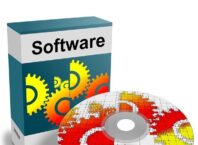Choosing the best inventory management software can be a very difficult task. There are a lot of inventory software to choose from. This may make it hard for you to come up with something that will best fit you. So, how do you start? Here are
Five helpful tips that can guide you in finding the best Inventory Management software.
Contents
1. Budget
The first thing you should decide on is your budget. If you don’t have a price range, then it will be impossible for you to find the right inventory management software. Having a budget will help you with narrowing down your search. This saves you the effort and the time it would take in considering other software outside the budget range. Prices for these software can range from $0 to about $100,000.
The price of a software can determine its quality, scalability, and its capabilities. If you don’t know your price range, then your ability to find the best software will be affected.
2. Inventory challenges
There’s a wide range of prices, and along with it is a breadth of software capabilities and functionality. You need to make sure that you know your inventory processes. You also need to make sure that you know the challenges you’re facing with the current workflow. Knowing all these will make it easier for you to recommend solutions to your inventory challenges.
3. Integration
At this point, you may not need to integrate your software with other software. Butas your business continues to grow, you’ll eventually need to. You’ll have to use multiple software in order to manage your operations. Data integration is the key to have a seamless flow of information.
To make sure you’re using the right inventory management software, make sure it can integrate with other systems. It is best if it can integrate with thesoftware you already have. Otherwise, you’ll need to enter the data manually. This can be tedious, especially if you have a large number of data.
Entering the data manually can be risky, since there’s a higher possibility of data loss. This can lead to delays with updating data. Choose a software that can integrate with other systems to improve visibility and efficiency. Data integration will eventually lead to the elimination of manual data entry.
4. Data Tracking
The main focus of the inventory management software is to track inventory levels. This will help you see what you’re receiving and filling orders. It will also help you see when you should order more. Make sure that the software is capable of tracking the way you need it to.
There are a lot of ways to track data in the inventory. Therefore, it’s important that you know the method that you’ll be using. You can track items using serialization, RFID tags, barcodes, kitting, and lot control. Different methods work better with different inventory processes. Because of this, you need to decide which method to use before you start searching for an inventory software.
Not all systems are capable of tracking, especially in small and mid office markets. If you force your inventory process to fit a system, you might end up spending more money than what you’re supposed to. To avoid the complications, determine which method will work before you begin the search.
5. The users
As you conduct your research, it’s important to know how many users you’ll need. The more the users are, the more expensive it will be. Knowing the number of users can help you estimate how much it will cost.
You also need to consider who is going to use the software, and where the user is located. Doing these will determine how the software will he set up. The users can be customers, suppliers, or managers, and they can be located in different parts of the country.
All of these are a great help in choosing the right inventory management software that best fits your company. But
Here are other important things to consider
1. Security and backup
Whether the information is stored on a cloud or locally, it is important for the software to be secure. Security measures must be put in place. At the end of the day, you should treat your information as your company’s treasure. Protect it from theft and hackers at all cost.
Loss of data can jeopardize your workflow and your business. To make sure you have a top notch security, you should back up your information daily. This helps you retrieve data in the event of a data loss.
2. Scalability
An inventory management software will need a room to grow, regardless of the company size. In short, it should be scalable. It’s best if it can handle a large capacity of inventory. Investing in this kind of software has its financial benefits. Switching from one software to another when the company expandsis costly. It also requires the staff to be trained again.
3. Reporting
Reporting is one of the most crucial features for an inventory management software. Reports help increase efficiency. They also create a smooth workflow.
With this, you can see which among your products generate more profit. You can also identify sales trends. Among the most common types of reports are order history, transaction reports, and inventory totals.
Some of the reports can be essential for your company. Therefore, you need to discover what your company needs for your processes. Make sure that your software allows you to generate reports. These reports will help your company to stay competitive.
4. Automatic Replenishment
Automatic replenishment is the process of the software to create purchase orders automatically. This is based on the reorder points. If your stock reaches its lowest point, it will automatically generate the orders. Each order includes the correct quantities.Then, the orders are approved.
You should see to it that your software includes this feature. Having this will keep you stay on top of the inventory and eliminate overstocks and stock outs.












